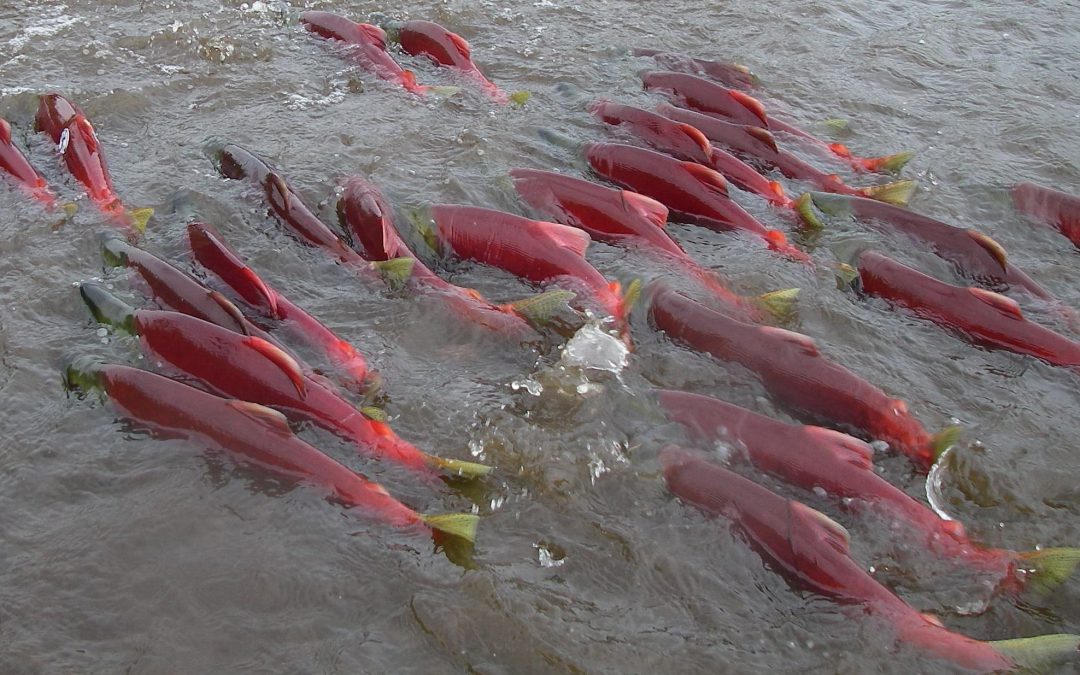Oregon Rivers increasing temperatures need attention
The U.S. Environmental Protection Agency (EPA) has a lot of work to do to protect salmon from hot water, according to a ruling issued by U.S. District Judge Marco A. Hernández Wednesday afternoon. The court threw out the pollution clean-up plans that EPA, the Oregon Department of Environmental Quality (DEQ), and intervenors from the paper, logging, and electric power industry sought to leave in place for the next 12 years.
Saying that “the Court concludes EPA’s errors are serious,” Judge Hernández ruled that 12 years of delay in replacing the temperature clean-up plans would be “manifestly unreasonable” and had no basis. He noted that Oregon has already adopted temperature water quality standards that are intended to protect salmon even if it does not want to use them.
At issue was the EPA’s repeated approval of an Oregon policy that routinely used clean-up plans, including those invalidated by the court, to override state water quality standards that are based on the biological needs of cold-water fish. A summary of three separate legal decisions that make up the court’s ruling is available here.
The ruling was applauded by the plaintiff, Northwest Environmental Advocates (NWEA), which has been involved in lawsuits over the temperature of Oregon rivers for 18 years. Temperature is Oregon’s most widespread pollution problem, imperiling threatened and endangered salmon, steelhead, and bull trout populations.
“After waiting decades for the agencies to establish and then use temperature goals for Oregon waters that are safe for salmon, it is gratifying to see the end in sight,” said Nina Bell, Executive Director of NWEA. “It’s always been a cynical ploy for Oregon to use clean-up plans as a means to set temperature goals that are lethal to salmon,” she added.
The case involves clean-up plans called Total Maximum Daily Loads or “TMDLs” that are required by the Clean Water Act. Previously, NWEA obtained a court order that prohibited DEQ from using the TMDL clean-up plans to override temperature standards that protect salmon. As compared to those standards, which are generally 16º C or 18º C (61 – 64º F), the Oregon TMDLs established temperatures as high as 32º C (90º F), a temperature EPA says kills salmon within seconds.
Although NWEA obtained a court order halting this process in 2012, the existing TMDLs remained in place. That brought NWEA to file the current case, which involves EPA’s approval of temperature TMDLs for large swaths of Oregon, including the basins of the Willamette, Rogue, Umpqua, Grande Ronde, John Day, Klamath, Umatilla, Middle Columbia/Hood, Malheur, Snake, and Sandy rivers.
In rejecting the governments’ plea to leave the TMDLs in place for 12 years, Judge Hernández found that the flawed TMDLs “could lead to the misprioritization of projects and the misallocation of state, municipal, and nongovernmental resources.” He also ruled that the TMDLs had to go because their “flaws . . . are so fundamental” that new ones would be substantially different.
The court also rejected EPA’s attempt to avoid a previously-ordered April 2019 deadline to complete TMDL clean-up plans for unsafe levels of mercury pollution in the Willamette River basin and temperature in the Klamath River basin.
The court’s order is similar to but different from another court’s order in October that instructed EPA to complete a temperature TMDL for the Columbia and lower Snake rivers in 90 days. Yesterday’s order covers the Snake River along the Oregon-Idaho border, including the Hells Canyon dam complex, downstream to river mile 188 at its confluence with the Salmon River.
NWEA is represented by Bryan Telegin, of Bricklin & Newman (Seattle), and Allison LaPlante, of the Earthrise Law Center at Lewis and Clark Law School.

